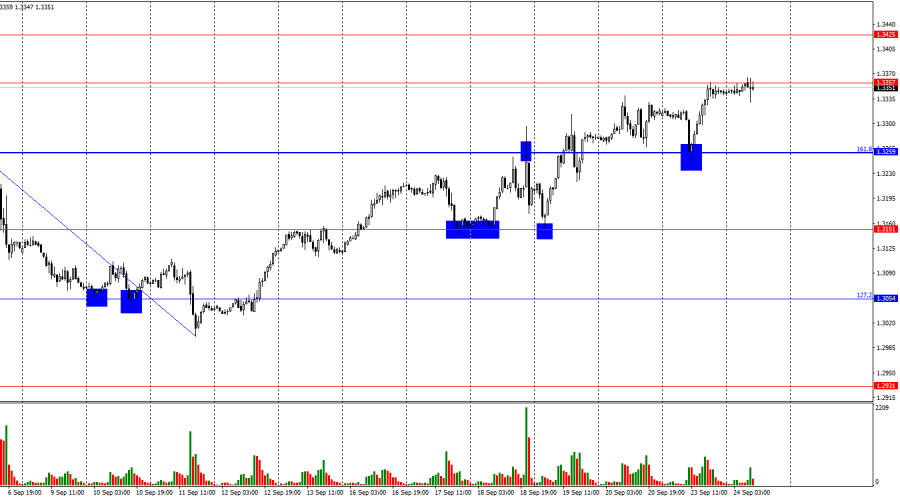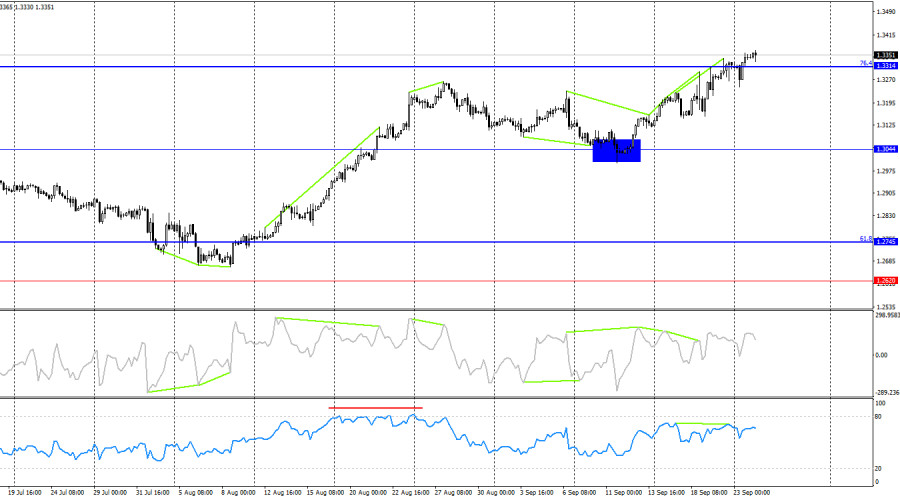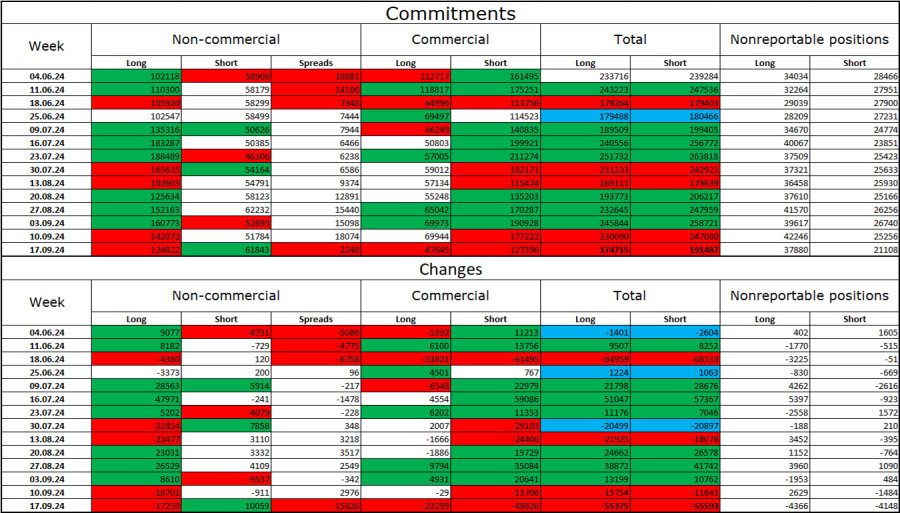
On the hourly chart, the GBP/USD pair declined to the 161.8% corrective level at 1.3259 on Monday, rebounded from this level, and then rose toward 1.3357. A rebound from the 1.3357 level may signal a reversal in favor of the US dollar and a decline towards 1.3259. A close above the 1.3357 level would increase the likelihood of further growth toward the next level at 1.3425. The bullish trend remains unquestionable.

The wave pattern also shows no signs of concern. The last completed downward wave (September 6-11) broke the low of the previous wave, while the current upward wave has broken the peak of the previous wave at 1.3234. Therefore, the bearish trend ended prematurely. At this point, I see no signs of a sideways movement that could potentially benefit the U.S. currency.
On Monday, the pound could have easily declined below 1.3259, but the bulls once again demonstrated their unwillingness to retreat, and as a result, the pound reached a new two-year high. The day began as expected, with the UK's manufacturing and services PMI indices for September falling short of expectations, causing some selling pressure on the pound. However, the bulls launched a new offensive near the 1.3259 support level, despite the lack of significant news. In my view, the current rally of the pound does not align with the incoming data. Thus, the bullish trend might be nearing its end, with bulls taking advantage of the remaining opportunities to profit from the prevailing trend. I could be wrong, but the pound is rising more frequently than the data and news would suggest. The Bank of England paused its easing policy in September, but how long will the pair keep rising? Until the next Bank of England meeting?

On the 4-hour chart, the pair rebounded from the 1.3044 level and rose to the 76.4% Fibonacci level at 1.3314, closing above it. The CCI indicator has already formed two bearish divergences, with another appearing on the RSI indicator. The pound has been overbought, as indicated by the RSI back in August. Since then, it has barely declined. However, the close above 1.3314 suggests a continuation of growth rather than the start of a decline.
Commitments of Traders (COT) Report:

The sentiment of the "Non-commercial" trader category has turned noticeably less bullish in the latest reporting week. The number of long positions held by speculators decreased by 17,250, while short positions increased by 10,059. This means that for the second consecutive week, professional traders are reducing long positions and increasing shorts, yet the pound hasn't significantly dropped during this time. Thus, a decline is very likely. Bulls still hold a significant advantage, with a difference of 63,000 positions: 125,000 long vs. 62,000 short.
In my opinion, the pound has potential for a downward movement, but the COT reports currently suggest otherwise. Over the past three months, the number of long positions has risen from 102,000 to 125,000, while short positions have grown from 58,000 to 62,000. I believe that over time, professional traders will start to reduce long positions or increase short positions, as all potential factors for buying the pound have already been priced in. However, technical analysis still indicates a bullish trend.
Economic Calendar for the US and UK:
On Tuesday, the economic events calendar contains no noteworthy entries. Therefore, the influence of the news on market sentiment for the remainder of the day will be absent.
Forecast and Trading Advice for GBP/USD:
Sales are possible upon a rebound from the 1.3357 level on the hourly chart, targeting 1.3259. I would not rush into buying, as the bulls might take a break this week. Consider buying if the pair closes above 1.3357 on the hourly chart, aiming for 1.3425.
The Fibonacci levels are drawn from 1.2892 to 1.2298 on the hourly chart and from 1.4248 to 1.0404 on the 4-hour chart.